JFK Assassination Books Online
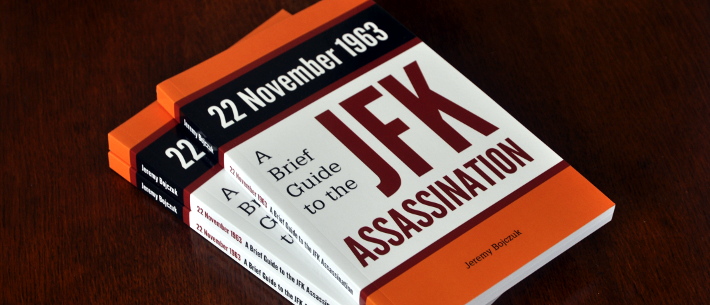
How many books have been published about the JFK assassination over the last half a century? Close to one and a half thousand, according to Bowker’s Books in Print, although the precise figure is anyone’s guess. The number of ebooks is much smaller, but is increasing rapidly.
The following list of titles contains links to a selection of online booksellers, and in some cases to the locations of direct downloads. Please bear in mind that paper–based books will occasionally be out of stock, and that the cover designs and the locations linked to may change.
The list is a work in progress. Not every worthwhile book on the JFK assassination is included, and not every included title is recommended. As with any controversial subject, readers should keep an open mind and should actively look for alternative opinions.
JFK Assassination Books and Ebooks
The following titles are available online as hardback or paperback books in English, unless stated otherwise.
Scroll down or click on these links for more information:
- John Armstrong: Harvey and Lee
- William Blum: Killing Hope
- Vincent Bugliosi: Reclaiming History
- G. Paul Chambers: Head Shot (paper and ebook)
- Noam Chomsky: Rethinking Camelot
- George de Mohrenschildt, ed. Rinella: Lee Harvey Oswald As I Knew Him (paper and ebook)
- James DiEugenio: Destiny Betrayed (paper and ebook)
- James DiEugenio and Lisa Pease, ed.: The Assassinations (paper and ebook)
- James Douglass: JFK and the Unspeakable (paper and ebook)
- James Douglass: JFK et l'Indicible (en français)
- Barry Ernest: The Girl on the Stairs
- James Fetzer, ed.: Murder in Dealey Plaza (paper and ebook)
- James Fetzer, ed.: The Great Zapruder Film Hoax (paper and ebook)
- Sherry Fiester: Enemy of the Truth
- Gaeton Fonzi: The Last Investigation (paper and ebook)
- Robert Groden: The Search for Lee Harvey Oswald
- Robert Groden: The Killing of a President
- Warren Hinckle and William Turner: The Fish is Red
- John Hughes–Wilson: JFK, An American Coup d’Etat (paper and ebook)
- Henry Hurt: Reasonable Doubt
- Michael Kurtz: Crime of the Century
- David Lifton: Best Evidence
- Gerald McKnight: Breach of Trust
- Sylvia Meagher: Accessories After the Fact (paper and ebook)
- Bonar Menninger: Mortal Error (paper and ebook)
- Jefferson Morley: Our Man in Mexico
- Jefferson Morley: Nuestro Hombre en México (en español)
- John Newman: JFK and Vietnam
- John Newman: Oswald and the CIA (paper and ebook)
- Gerald Posner: Case Closed (paper and ebook)
- Stephen Rabe: The Most Dangerous Area in the World
- Howard Roffman: Presumed Guilty
- Peter Dale Scott: Deep Politics and the Death of JFK (paper and ebook)
- Peter Dale Scott: Oswald, Mexico, and Deep Politics (paper and ebook)
- Bill Simpich, State Secret (online book)
- Oliver Stone and Zachary Sklar: JFK: The Book of the Film
- Anthony Summers: Not in Your Lifetime (paper and ebook)
- Josiah Thompson: Six Seconds in Dallas
- Richard Trask: Pictures of the Pain
- Richard Walton: Cold War and Counter–Revolution
- Harold Weisberg: Case Open
- Harold Weisberg: Never Again (paper and ebook)
- David Wrone: The Zapruder Film
- Barbie Zelizer: Covering the Body
John Armstrong: Harvey and Lee: How the CIA Framed Oswald
There are many far–fetched theories about the JFK assassination, but few are as implausible as the one put forward in this book. Two boys, named ‘Harvey’ and ‘Lee’, were chosen by the CIA to be part of an undercover operation, in the hope that when they grew up they would turn out to look sufficiently alike that one could be mistaken for the other, although not so alike that the dastardly plot cannot be unravelled. One boy was born in Texas, and the other in Hungary, where he learned to speak Russian. Each had a mother named Marguerite, one of whom is repeatedly described as “tall, nice–looking,” while the other was “short, dumpy, heavy–set.” In reality, Lee Harvey Oswald was born in New Orleans, Louisiana, and had only one mother named Marguerite. Oswald and his mother, like everyone else, changed in appearance over the years, but each was really only one person.
Next to no solid evidence is put forward to support any of this. Subjective interpretations of photographs taken at different times are assumed to provide conclusive proof that Oswald was two different people, and that his mother was two different people. School records indicating that Oswald attended two schools at the same time would suggest to most people that the records are mistaken, but to Armstrong they provide proof that there were two Oswalds. An anonymous phone call claimed that Oswald’s father and uncle were Hungarian communists; this is enough for Armstrong to invent an identity for one of the boys as a Russian–speaking Hungarian.
The book gives the impression of being not so much written as thrown together. It is a poorly argued, disorganised mess. Notes, often of no relevance to the surrounding material, are dumped between paragraphs rather than integrated into the text. Armstrong jumps from topic to topic without warning or any obvious purpose. For example, after several pages discussing the early lives of his imaginary ‘Harvey’ and ‘Lee’, the scene suddenly switches in the middle of page 77 to a discussion of the CIA’s overthrow of foreign governments. Armstrong loses interest in the CIA’s nefarious activities by page 81, when he returns to the two boys for another 20 pages.
The book’s typography reflects the confused thinking behind the book’s central idea. Almost every page contains passages that are highlighted in italic, or in bold face, or by underlining, or a bizarre combination of all three, with no obvious reason why each style was chosen.
Find out more about John Armstrong’s ‘Harvey and Lee’ theory.

William Blum: Killing Hope: US Military and CIA Interventions Since World War II
Killing Hope is an invaluable source for the political context of the JFK assassination, in particular the Kennedy administration’s treatment of Cuba, south–east Asia and South America.
Extracts from Blum’s book, including his chapter on Cuba, are available online at http://williamblum.org/books/killing-hope, which also contains links to editions of the book in several other languages.

Available from:
Vincent Bugliosi: Reclaiming History: The Assassination of President John F. Kennedy
Including a CD, Reclaiming History is over 2,500 pages long. The central part of Bugliosi’s argument is that neutron activation analysis demonstrates:
- that all the bullet fragments from Kennedy and the car originated from just two bullets,
- and that those two bullets were fired from the rifle discovered on the sixth floor of the Texas School Book Depository.
Hence, it is reasonable to suppose that Lee Harvey Oswald was guilty of the JFK assassination. For more about the book, including links to articles that criticise Bugliosi’s treatment of the NAA evidence, see Fiction, Propaganda and the Media.
Four Days in November, an abridged version of Reclaiming History, is available from Amazon as an ebook (Kindle format).

Available from:
G. Paul Chambers: Head Shot: The Science Behind the JFK Assassination
Head Shot deals well with Reclaiming History’s attempt to revive the single–bullet theory. Chambers disposes of two scientific supports for the lone–nut explanation:
- the speculative notion that Governor Connally’s lapel flap was caused by a bullet which had already wounded President Kennedy;
- and the so–called ‘jet effect’ explanation for the movement of Kennedy’s head in reaction to the fatal shot.
The book includes a readable overview of the acoustics evidence. Only one important aspect of the scientific evidence is not covered: the neutron activation analysis of Lee Harvey Oswald’s paraffin casts and the bullet fragments.
Commercial publishers often insist for promotional reasons that books about the JFK assassination provide a neat solution to one or other aspect of the case. Such a requirement invariably demands excessive speculation, and diminishes the quality of a book. Head Shot’s unique selling point is Chambers’ identification of the precise type of gun used to fire the fatal head shot.
For more information about the book, see Martin Hay’s detailed review at https://kennedysandking.com/john-f-kennedy-reviews/chambers-g-paul-head-shot-the-science-behind-the-jfk-assassination, which points out several flaws in Chambers’ account of the medical evidence.

Available from:
- Abe Books
- Alibris
- Amazon (print version)
- Amazon (ebook: Kindle format)
- Awesome Books
- Barnes and Noble (print version)
- Barnes and Noble (ebook: EPUB format)
- Better World Books
- Powell’s Books
- The Book Depository
- The Hive Network
- Waterstone’s Books (print version)
- Waterstone’s Books (ebook: EPUB format)
Noam Chomsky: Rethinking Camelot: JFK, The Vietnam War, and US Political Culture
Chomsky argues that the Kennedy administration’s military policy toward south–east Asia was more aggressive than later official sources made it out to be. The book is essential background reading for the political context of the assassination.
Noam Chomsky’s opinion of the JFK assassination is that because it was not the result of a high–level conspiracy, it was not a significant political event.
The text of Rethinking Camelot is available online at http://zcomm.org/rethinking-camelot/

Available from:
George de Mohrenschildt, ed. Michael Rinella: Lee Harvey Oswald As I Knew Him
Michael Rinella, a professional editor, has taken George de Mohrenschildt’s text, I Am a Patsy!, and added an introductory essay, photographs, excerpts from de Mohrenschildt’s testimony before the Warren Commission, and more than 700 informative endnotes.
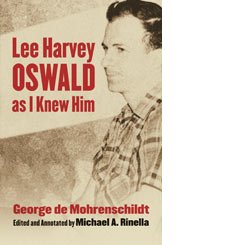
Available from:
James DiEugenio: Destiny Betrayed: JFK, Cuba and the Garrison Case
There can be few people more knowledgeable about the JFK assassination than James DiEugenio. The second edition of Destiny Betrayed, published in 2012, makes good use of the evidence released to the public by the Assassination Records Review Board in the 1990s, after the publication of the first edition of the book. It is one of the essential recent books about the assassination.
The first edition came out at the same time as Oliver Stone’s film, JFK. Like Stone, DiEugenio uses the investigation and trial of Clay Shaw as the central element of his work, and builds around it a strong narrative of the causes and consequences of the assassination.
Destiny Betrayed is particularly useful for its accounts of Lee Oswald’s activities in Louisiana in the summer of 1963, and of the remarkable amount of effort that went into derailing Jim Garrison’s investigation into the New Orleans aspects of the assassination.

Available from:
- Abe Books
- Alibris
- Amazon (print version)
- Amazon (ebook: Kindle format)
- Barnes and Noble
- Better World Books
- Mary Ferrell Foundation
- Powell’s Books
- The Book Depository
- The Hive Network
- Waterstone’s Books
James DiEugenio and Lisa Pease, ed.: The Assassinations: Probe Magazine on JFK, MLK, RFK and Malcolm X
A collection of articles from Probe magazine.

Available from:
- Abe Books
- Alibris
- Amazon (print version)
- Amazon (ebook: Kindle format)
- Barnes and Noble (paper version)
- Barnes and Noble (ebook: EPUB format)
- Better World Books
- Kobo (ebook: EPUB format)
- The Book Depository
James Douglass: JFK and the Unspeakable: Why He Died and Why It Matters
Douglass, a theologian, applies Thomas Merton’s concept of ‘the Unspeakable’ to the political context of the assassination. President Kennedy is depicted as a force for peace, who was eliminated by those who feared that he was likely to change US policy toward Cuba and south–east Asia. Douglass’s interpretation of Kennedy as a saintly, heroic figure is echoed on the front cover of the French edition of the book, which gives Kennedy a halo.
JFK and the Unspeakable’s coverage of the assassination itself, and of Oswald’s career, is comprehensive. It is perhaps too comprehensive; Douglass reports as fact several episodes that may well have happened but which rely on insufficiently corroborated testimony. Some witnesses of dubious credibility, such as Ed Hoffman, are treated uncritically. Nevertheless, the book is well worth reading.
For more about JFK and the Unspeakable, see e.g.:
- A sympathetic review by James DiEugenio.
- A very unsympathetic review by John McAdams.
For more about Douglass, and extracts from JFK and the Unspeakable, see http://ratical.org/ratville/JFK/Unspeakable/. A series of dramatic scripts, based on the book, are available for performance. There appear to be plans to issue the book as a graphic ebook.

Available from:
- Abe Books
- Alibris
- Amazon
- Barnes and Noble
- Better World Books
- Powell’s Books (ebook: EPUB format)
- Simon and Schuster
- The Book Depository
- The Hive Network
- Waterstone’s Books (print version)
- Waterstone’s Books (audio CD)
James Douglass : JFK et l’Indicible: Pourquoi Kennedy a été assassiné
Douglass, un théologien, applique le concept de « l’Indicible », inventé par Thomas Merton, au contexte politique de l’assassinat du président Kennedy. Selon Douglass, Kennedy était une force pour la paix, et on lui a tué pour cette raison. Les ennemis de Kennedy soupçonnaient qu’il avait l’intention de changer les politiques des États–Unis en ce qui concerne Cuba et l’Indochine.
Le livre contient une description pleine de l’assassinat et de la carrière de Lee Harvey Oswald. En plus des faits incontestables qui indiquent un complot, Douglass rapporte plusieurs épisodes qui manquent de la corroboration; par exemple, le compte rendu de Robert Vinson, qui à prétendu qu’il était un passager dans un avion du CIA un peu d’heures après l’assassinat. Selon Vinson, l’avion a atterri en secret à Dallas pour aider un imposteur de Lee Oswald à s’éschapper. Peut–être c’est vrai, mais il n’y a pas d’autres témoins, et Vinson attendait pendant trente ans avant de raconter son histoire. Douglass l’accepte sans poser aucune question.
On peut critiquer l’interprétation politique de Douglass et son attitude aux preuves. Néanmoins, JFK et l’Indicible vaut la peine d’être lu.

Barry Ernest: The Girl on the Stairs: The Search for a Missing Witness to the JFK Assassination
Victoria Adams and her colleague Sandra Styles descended the wooden stairs from the fourth floor of the Texas School Book Depository very soon after the assassination. The case against Lee Harvey Oswald required that the alleged assassin was also on the stairs at this time. Adams stated to the Warren Commission that she had not seen or heard anyone else during their descent. Barry Ernest finds evidence that supports her account.
For more about The Girl on the Stairs, see the author’s blog: http://thegirlonthestairs.wordpress.com.

Available from:
James Fetzer, ed.: Murder in Dealey Plaza: What We Know Now that We Didn’t Know Then about the Death of JFK
Murder in Dealey Plaza includes two interesting and informative essays on the medical evidence, alongside several less convincing articles arguing that the Zapruder film was a fake.
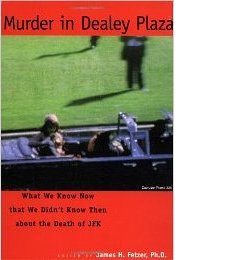
Available from:
- Abe Books
- Alibris
- Amazon (print version)
- Amazon (ebook: Kindle format)
- Barnes and Noble
- Better World Books
- Kobo (ebook: EPUB format)
- Powell’s Books
- The Book Depository
- Waterstone’s Books
James Fetzer, ed.: The Great Zapruder Film Hoax: Deceit and Deception in the Death of JFK
An entire book devoted to the proposition that the Zapruder film was a fake. Contributions range from the vaguely respectable to the astonishingly amateurish. A rough paraphrase of one example: “Here is a frame from the Zapruder film, which shows spectators in the background. Here is a still photograph which also shows spectators in the background. The two images were taken from different locations in Dealey Plaza, and probably at different times. The spectators are different. Therefore the Zapruder film has been altered.”
The unintentionally amusing highlight is one contributor’s account of his visit to Dallas. Keeping to the theme that nothing is what it seems, he suggests that what appear to be rain sensors in Dealey Plaza are in fact listening devices, primed to capture the subversive mutterings of tourists on the grassy knoll. And the lamp–posts have been adjusted to mislead anyone who tries to take measurements to prove that the Zapruder film has been altered. And he is followed around Dallas by the secret police, who break into his suitcase to sabotage his shirt and his electric shaver. Or maybe that was the baggage handlers at the airport, but in any event someone is definitely out to get him.
For a sensible discussion of the topic, see Josiah Thompson, ‘Bedrock Evidence in the Kennedy Assassination,’ at www.maryferrell.org. The question of authenticity is dealt with comprehensively in David Wrone: The Zapruder Film.
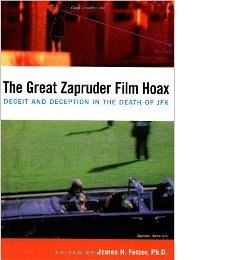
Available from:
- Abe Books
- Alibris
- Amazon (print version)
- Amazon (ebook: Kindle format)
- Barnes and Noble
- Better World Books
- Powell’s Books
- The Book Depository
- Waterstone’s Books
Sherry Fiester: Enemy of the Truth: Myths, Forensics, and the Kennedy Assassination
Sherry Fiester, a retired professional crime scene investigator, applies forensic investigative techniques to aspects of JFK’s head wound, such as bevelling and blood spatter.

Available from:
Gaeton Fonzi: The Last Investigation
Fonzi, an investigator for the House Select Committee on Assassinations in the late 1970s, cornered David Attlee Philips, of the CIA’s Mexico City station, and almost got Philips to admit having played a role in the impersonation of Oswald in Mexico City.

Available from:
- Abe Books
- Alibris
- Amazon (print version)
- Amazon (ebook: Kindle format)
- Barnes and Noble
- Better World Books
- Mary Ferrell Foundation
- Powell’s Books
- The Book Depository
- Waterstone’s Books
Robert Groden: The Search for Lee Harvey Oswald
Groden’s book includes almost every extant photograph of Lee Harvey Oswald.

Available from:
Robert Groden: The Killing of a President
The Killing of a President contains a large number of photographs covering every aspect of the assassination, including the impersonation of Oswald in Mexico City and Oswald’s murder by Jack Ruby. Groden also provides an illustrated, though very speculative, account of which shots came from which location.

Available from:
Warren Hinckle and William Turner: The Fish is Red: The Story of the Secret War Against Castro
An account of the covert attacks on Cuba under Kennedy.

Available from:
John Hughes–Wilson: JFK, An American Coup d’Etat: The Truth Behind the Kennedy Assassination
Colonel John Hughes–Wilson is a military historian who writes for several of the main British newspapers and appears on the BBC. Perhaps surprisingly, given these establishment credentials, he recognises that the Warren Commission was merely a public relations exercise and that Oswald had been framed in advance and probably played no active role in the assassination.
The book is an entertaining read, and provides a comprehensive account of a conspiracy that originated within the US establishment. The charge sheet includes all the usual suspects, and more: Lyndon Johnson, the CIA, big business, the mafia and anti–Castro Cubans, as well as the state of Israel.
Hughes–Wilson’s over–inclusive approach extends to the evidence he cites, not all of which is credible. Controversial figures such as Beverly Oliver, Gordon Arnold, James Files and even Norman Similas are taken at their word; the alteration of the Zapruder film is asserted without argument; the three tramps are claimed to be conspirators; and so on. The book concludes with a detailed and highly speculative description, complete with flow–chart, of who did what.
Nevertheless, it is good that someone in Col. Hughes–Wilson’s position is unafraid to point out the obvious facts that contradict the official verdict. Whether he would be permitted to do so on the present–day BBC is another matter.
JFK, An American Coup d’Etat does not contain footnotes or endnotes, although a selection of sources can be found online at www.jfkcoupdetat.wordpress.com.

Available from:
- Amazon (print version)
- Amazon (ebook: Kindle format)
- Barnes and Noble
- Powell’s Books
- Kobo (ebook: EPUB format)
- The Book Depository
- Waterstone’s Books
Henry Hurt: Reasonable Doubt: An Investigation into the Assassination of John F. Kennedy
Reasonable Doubt is one of the better general introductions to the subject. Hurt deals with all the main questions in a balanced and rational way.
Balanced and rational books about the JFK assassination, however, rarely attract substantial publicity budgets. Presumably for promotional reasons, Hurt’s book contains a supposed confession by one Robert Easterling, whose role was apparently that of Oswald’s getaway driver. Needless to say, anyone who claims to have been involved in the assassination conspiracy can automatically be removed from suspicion. Hurt seems to try to minimise the damage to his book’s credibility by describing Easterling as “a multiple felon, an ex–convict, a raging alcoholic, a diagnosed psychotic and schizophrenic”. Apart from this one absurd chapter, the book is well worth reading.
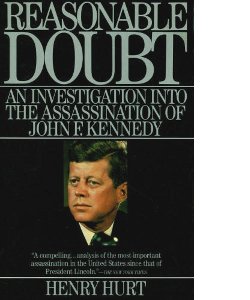
Available from:
Michael Kurtz: Crime of the Century: The Kennedy Assassination from a Historian’s Perspective
Michael Kurtz, a professional historian who taught a course on the JFK assassination at Southeastern Louisiana University, has produced a very readable account of the central issues in the JFK assassination. He doubts the official, lone–nut explanation, but seems to favour an idiosyncratic and implausible conspiracy theory in which the assassination was instigated by Fidel Castro and was implemented with the assistance of Santo Trafficante and Carlos Marcello, the mob bosses of Florida and Louisiana respectively.
In his introduction to the second edition of Crime of the Century, Kurtz mentions that when he was a student in New Orleans in 1963, he himself encountered the supposedly left–wing Lee Harvey Oswald in the company of the undoubtedly right–wing Guy Banister on two occasions, one of which involved Banister speaking at length to a group of students: “Bannister [sic; one of several names spelled incorrectly in the book] took what can only be called an extremist right–wing position, vehemently advocating a return to racial segregation, criticizing the students for attending an integrated university, and insisting that the United States launch a full–scale military invasion of Cuba” (p.xxxix). Crime of the Century contains a concise and informative account of Oswald’s political associations in New Orleans in the few months before the assassination. Kurtz concludes that “Oswald’s public image as a pro–Castro Marxist was a façade masking the anti–Castro and anti–Communist agitator beneath” (p.204).

Available from:
David Lifton: Best Evidence: Disguise and Deception in the Assassination of John F. Kennedy
David Lifton attempted to resolve some of the problems with the medical evidence by claiming that President Kennedy’s body was surgically altered before the autopsy. Lifton interviewed many of the people involved in JFK’s autopsy, and uncovered some useful information. His conclusion, however, was far–fetched, and was criticised by, among others, Roger Feinman.
It is rare for any of the sober and reasonable critical books on the JFK assassination to get any positive coverage in the media. Best Evidence, in contrast, was awarded a publicity budget of a size normally allocated only to books that promote the Oswald–did–it myth. Perhaps this was because Best Evidence does little to challenge that myth.
The average non–specialist might look at the media’s decision to promote Best Evidence, and assume that Lifton’s bizarre body–alteration notions are a necessary part of the argument against the lone–nut theory: “So they stole Kennedy’s body from Air Force One and no–one noticed? And they got some surgeons to alter his wounds and the pathologists didn’t notice? And who are ‘they’, anyway? Hmm. Maybe Oswald did it after all.”

Available from:
Gerald McKnight: Breach of Trust: How the Warren Commission Failed the Nation and Why
Breach of Trust is a comprehensive and scholarly account of the formation of the Warren Commission and the manner in which it fulfilled its pre–determined conclusions. McKnight provides an excellent critique of the single–bullet theory and the role of J. Edgar Hoover’s FBI in the cover–up.
Breach of Trust is perhaps the best book written on the JFK assassination since the work of the earliest critics in the 1960s, and is an essential item for anyone with a serious interest in the subject.

Available from:
Sylvia Meagher: Accessories After the Fact: The Warren Commission, the Authorities, and the Report
Meagher took the trouble to do what the Warren Report’s reviewers in the media failed to do: she questioned the case against Lee Harvey Oswald by checking the report’s conclusions against the evidence on which they were supposedly based. Senator Richard Schweiker wrote a preface to the reissue of Accessories After the Fact, in which he called the book “by far the most meticulous and compelling indictment of the Warren Commission Report.”
Although a good deal of evidence has come to light since Accessories After the Fact was written, the book remains one of the best general accounts of the subject. It has recently been reissued by the Mary Ferrell Foundation.

Available from:
- Abe Books
- Alibris
- Amazon (print version)
- Amazon (ebook: Kindle format)
- Barnes and Noble
- Kobo (ebook: EPUB format)
- Mary Ferrell Foundation
- Powell’s Books
- The Book Depository
Bonar Menninger: Mortal Error: The Shot that Killed JFK
Menninger, a journalist, reports the claims of a ballistics expert that President Kennedy was killed accidentally by a Secret Service agent in the car behind him. The thesis is plainly wrong, for reasons given in Fiction, Propaganda and the Media, but the book contains useful information on the ballistics evidence.
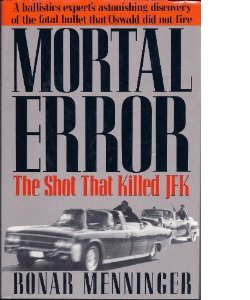
Available from:
- Abe Books
- Alibris
- Amazon (print version)
- Amazon (ebook: Kindle format)
- Barnes and Noble
- Better World Books
- Powell’s Books
Jefferson Morley: Our Man in Mexico: Winston Scott and the Hidden History of the CIA
Winston Scott was the chief of the CIA’s station in Mexico City during Lee Harvey Oswald’s apparent visit about seven weeks before the JFK assassination.
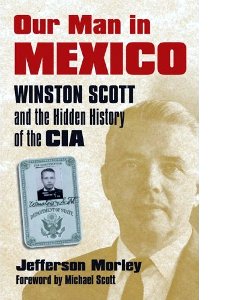
Available from:
Jefferson Morley: Nuestro Hombre en México: Winston Scott y la historia oculta de la CIA
Winston Scott estaba el jefe de la oficina del CIA en Ciudad de México durante la visita de Lee Harvey Oswald unas siete semanas antes del asesinato del presidente Kennedy.
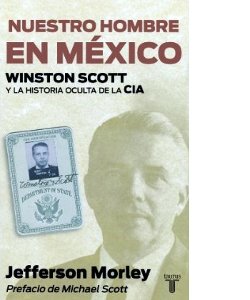
Disponible de:
John Newman: JFK and Vietnam: Deception, Intrigue and the Struggle for Power
Newman argues that President Kennedy had planned to withdraw US troops from Vietnam.

Available from:
John Newman: Oswald and the CIA
In one of the essential books on the JFK assassination, Newman describes the CIA’s long–standing interest in Lee Harvey Oswald, and documents the pivotal event that provoked the cover–up: the impersonation of Oswald in Mexico City in late September and early October 1963.

Available from:
- Abe Books
- Alibris
- Amazon
- Barnes and Noble (print version)
- Barnes and Noble (ebook: EPUB format)
- Better World Books
- Powell’s Books
- The Book Depository
- Waterstone’s Books
Gerald Posner: Case Closed: Lee Harvey Oswald and the Assassination of JFK
Case Closed, like the Warren Report, is essentially a hatchet job on the character of Lee Harvey Oswald. Like the Report, the book was praised by reviewers in the media, few of whom bothered to check Posner’s claims.
See Fiction, Propaganda and the Media for the reactions of informed critics, who pointed out serious problems with large parts of Case Closed, and for accusations of plagiarism against Posner. For a stunning example of Posner’s misrepresentation of the evidence, see Did Oswald Carry a Bag of Curtain Rods to Work?
Sadly, Case Closed is not the worst book ever published on the JFK assassination.

Available from:
- Abe Books
- Alibris
- Amazon (print version)
- Amazon (ebook: Kindle format)
- Barnes and Noble
- Better World Books
- Kobo (ebook: EPUB format)
- Powell’s Books
- The Book Depository
- Waterstone’s Books
Stephen Rabe: The Most Dangerous Area in the World: John F. Kennedy Confronts Communist Revolution in Latin America
During the Kennedy presidency, elite interests considered Latin America more important than south–east Asia. Rabe analyses policy using conventional assumptions.

Available from:
Howard Roffman: Presumed Guilty: How and Why the Warren Commission Framed Lee Harvey Oswald
Roffman made use of the first batch of declassified documents. Presumed Guilty is not well known, despite being one of the most powerful critiques of the Warren Commission’s case against Lee Harvey Oswald
The book is only available second–hand, when it can be found at all. The text is available online at http://www.ratical.org/ratville/JFK/PG/.

Available from:
Peter Dale Scott: Deep Politics and the Death of JFK
Scott was the first writer to explain in detail the importance of Lee Harvey Oswald’s impersonation in Mexico City in late September and early October 1963: how it prompted what Scott calls the ‘phase one’ myth, that Oswald was a communist sympathiser, a false story that was later replaced for practical, political reasons by the ‘phase two’ myth, that Oswald was a lone assassin.
Deep Politics and the Death of JFK argues that Kennedy intended to withdraw US troops from Vietnam, and that this was part of the reason for his assassination. The book also includes a good deal of information contradicting the Warren Commission’s claim that Jack Ruby had no significant connections to the world of organised crime.

Available from:
- Abe Books
- Alibris
- Amazon (print version)
- Amazon (ebook: Kindle format)
- Barnes and Noble
- Better World Books
- Powell’s Books
- The Book Depository
- Waterstone’s Books
Peter Dale Scott: Oswald, Mexico, and Deep Politics: Revelations from CIA Records on the Assassination of JFK
In this collection of essays, which has also been published as Deep Politics II: Essays on Oswald, Mexico and Cuba, Scott concentrates on Oswald’s apparent journey to Mexico City, and demonstrates that the episode was an integral part of the assassination.

Available from:
- Abe Books
- Alibris
- Amazon (print version)
- Amazon (ebook: Kindle format)
- Mary Ferrell Foundation
- Powell’s Books
- The Book Depository
Bill Simpich: State Secret: Wiretapping in Mexico City, Double Agents, and the Framing of Lee Oswald
Bill Simpich’s State Secret: Wiretapping in Mexico City, Double Agents, and the Framing of Lee Oswald provides a great deal of useful background to the impersonation of Lee Harvey Oswald in Mexico City, the event which made the lone–nut hypothesis the only politically acceptable solution to the assassination.
Simpich describes how the CIA’s response to the assassination was constrained by Oswald’s association with two of the Agency’s secret activities:
- the mole–hunting activities of James Angleton’s Special Investigations Group, which used Oswald as bait in an attempt to identify Soviet or Cuban infiltration of the CIA;
- and the telephone tapping operation against the Soviet and Cuban diplomatic buildings in Mexico City, which revealed Oswald’s impersonation.
State Secret was published in HTML format in late 2013, and is available free of charge at the www.maryferrell.org website.
The book is essential reading for anyone interested in the institutional response to the assassination, not least because it contains copious links to primary documents hosted on the Mary Ferrell website. One minor criticism might be that the links to uninformative URLs like http://www.maryferrell.org/mffweb/archive/viewer/showDoc.do?absPageId=14131 would benefit from the use of the title element. To see the difference, hover over this link: http://www.maryferrell.org/mffweb/archive/viewer/showDoc.do?absPageId=14131.
Oliver Stone and Zachary Sklar: JFK: The Book of the Film
As well as the annotated screenplay of Oliver Stone’s movie, JFK, the book includes a large number of newspaper and magazine articles about the film. Many of the articles are critical of Stone and his work, and illustrate the unusual amount of hostility directed at JFK. For more about the media campaign against the film, see Fiction, Propaganda and the Media.

Available from:
Anthony Summers: Not in Your Lifetime: The Assassination of JFK
This book by the investigative reporter, Anthony Summers, was first published in 1980 under the title Conspiracy, and later as The Kennedy Conspiracy. It was revised in 1998 under its current title, and has been rewritten to coincide with the 50th anniversary of the JFK assassination.
Each edition of the book has been worth reading. Summers is a fluent writer, and gives a fair account of all the important issues to do with the assassination.
Like many books on this subject that are aimed at a mass market, Not in Your Lifetime proposes a candidate for the role of assassin. Earlier editions described a journalist’s attempt to show that a Corsican gangster, Lucien Sarti, was one of the gunmen. The 2013 edition discards Sarti and instead mentions a second–hand account that names a Cuban killer, Herminio Díaz García.

Available from:
- Alibris
- Amazon (print version)
- Amazon (ebook: Kindle version)
- Better World Books
- Headline, the book’s publisher
- Powell’s Books
- The Book Depository
- Waterstone’s Books (print version)
- Waterstone’s Books (ebook: EPUB format)
Josiah Thompson: Six Seconds in Dallas: A Micro–Study of the Kennedy Assassination
One of the most influential of the early critiques of the Warren Report. Like several of its contemporaries, Six Seconds in Dallas is now a collector’s item. Second–hand copies tend to be expensive.
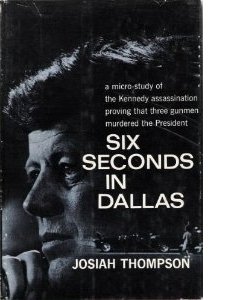
Available from:
Richard Trask: Pictures of the Pain: Photography and the Assassination of President Kennedy
Pictures of the Pain contains a large number of images from professional and amateur photographers in Dealey Plaza. Trask’s book provides a good deal of informative context for the photographs, often as a result of personal interviews with the photographers. It is essential reading for anyone interested in the photographic record of the assassination.
The book does not promote a particular interpretation of the assassination. Although Trask has an opinion on the question of Lee Oswald’s guilt or innocence, he does not force his opinion onto his readers. Unlike many authors on both sides of the conspiracy versus lone nut issue, Richard Trask has the honesty to present evidence that contradicts his personal opinion.
Pictures of the Pain, despite being self–published, is produced to a higher standard than many professionally published books.
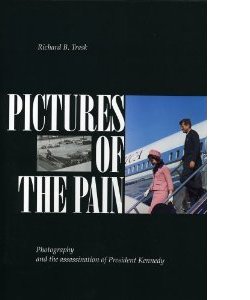
Available from:
Richard Walton: Cold War and Counter–Revolution: The Foreign Policy of John F. Kennedy
Walton argues that Kennedy’s foreign policy followed the standard pattern, and that JFK was not likely to have withdrawn troops unilaterally from Vietnam.
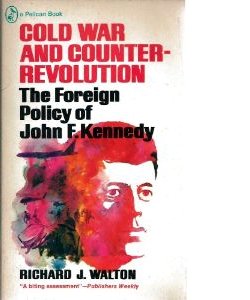
Available from:
Harold Weisberg: Case Open: The Omissions, Distortions and Falsifications of Case Closed
Weisberg’s critique of Posner’s Case Closed. Weisberg, like almost all well–informed critics, found numerous faults with Posner’s book.
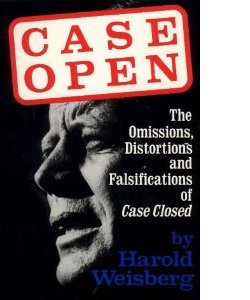
Available from:
Harold Weisberg: Never Again
Weisberg’s is still one of the best accounts of the problems with the medical evidence.
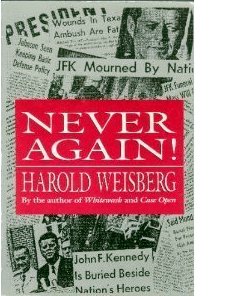
Available from:
- Abe Books
- Alibris
- Amazon
- Barnes and Noble
- Kobo (ebook: EPUB format)
- Mary Ferrell Foundation
- Powell’s Books
- The Book Depository
- Waterstone’s Books
David Wrone: The Zapruder Film: Reframing JFK’s Assassination
Wrone has written the definitive account of the Zapruder film: its history, its muddled ownership, and its evidentiary role in refuting the case against Oswald as a lone assassin. Wrone also provides a sturdy rebuttal of the theory that the Zapruder film has been altered, as suggested by e.g. James Fetzer, ed.: The Great Zapruder Film Hoax.
Some of Wrone’s detailed claims about the assassination are less sturdy. He proposes that JFK’s throat and back wounds may have been caused by a shot from the front that passed through his body, and he suggests that James Altgens’s famous photograph shows Lee Oswald on the steps of the TSBD during the shooting.
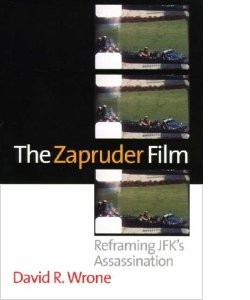
Available from:
Barbie Zelizer: Covering the Body: The Kennedy Assassination, the Media, and the Shaping of Collective Memory
An interesting account of how insititutional constraints influenced the media’s coverage of the assassination and the aftermath.

Available from: